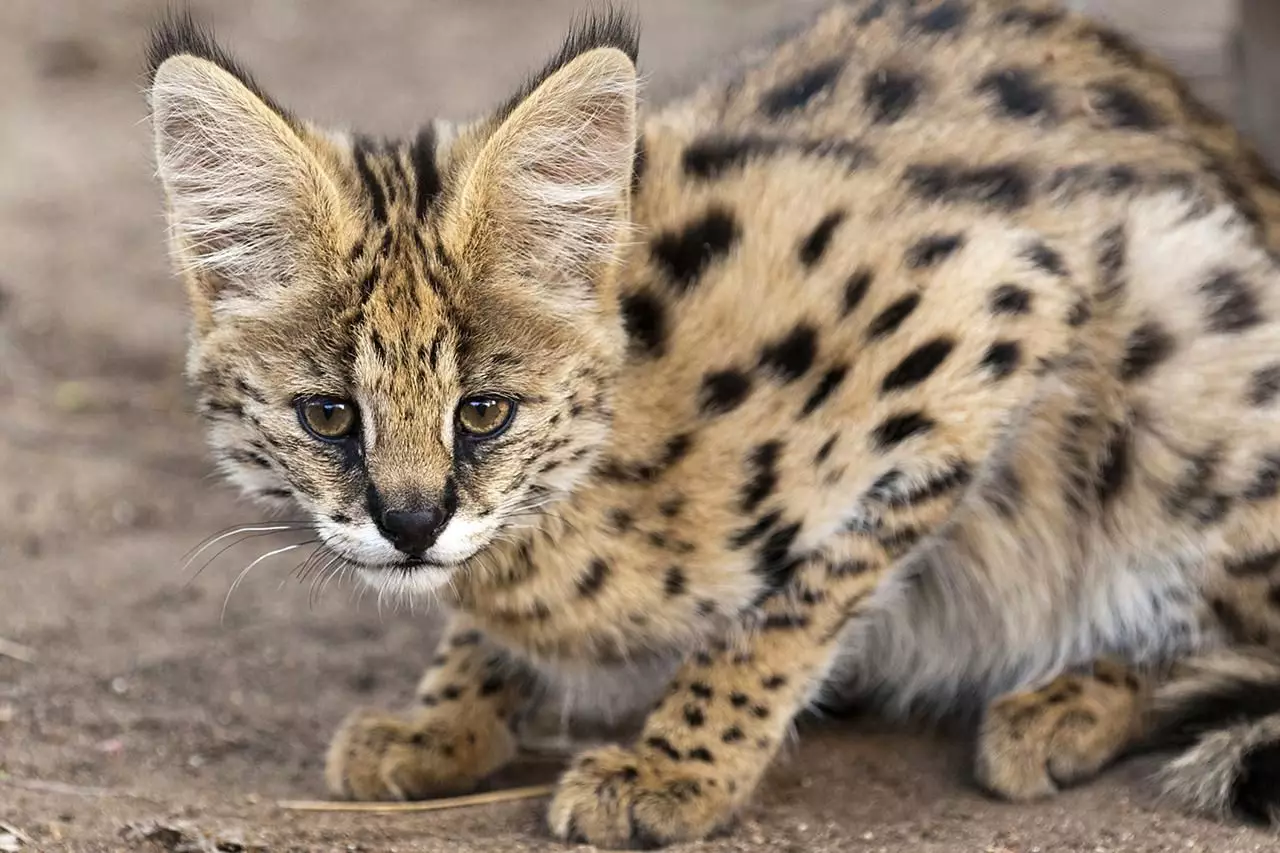Serval cats, scientifically known as *Leptailurus serval*, are enthralling creatures that captivate wildlife enthusiasts and exotic pet admirers alike. Originating from the sprawling savannas of sub-Saharan Africa, these long-legged, spotted felines are a unique manifestation of nature’s beauty and complexity. However, a desire to bring a serval into a home requires profound introspection and an understanding of their wild essence. Unlike traditional domestic cats, servals possess inherent traits shaped by their wild ancestry, which makes them less suitable as household pets.
Standing nearly two feet tall and weighing between 20 to 40 pounds, servals command attention with their eye-catching appearance. Their golden-yellow coats are adorned with striking black spots, resembling the camouflage patterns found in their natural habitats. These large felines are equipped with exceptionally large ears, providing them with acute hearing that is critical for hunting. Servals are primarily nocturnal, relying on their physical prowess and keen senses to stalk prey in the tall grasslands where they reside.
The serval’s construction has also earned it the nickname “giraffe cat,” reflecting its remarkable height and agility. Their elongated legs allow for incredible jumping capabilities, enabling them to leap over nine feet vertically to catch birds mid-flight or to evade potential threats. This unique physique is a testament to their specialization as hunters and wild predators, traits that need to be considered in any attempts to domesticate them.
One of the notable characteristics of serval cats is their independent and aloof personality. Unlike typical domestic cats, which often crave human affection, servals prioritize their solitude and autonomy. They thrive in expansive territories that can span several square miles in the wild, where they hunt and establish their domains alone. It is crucial to recognize that servals may bond closely with a single individual but generally do not exhibit affectionate behaviors such as purring or cuddling.
When it comes to companions, servals may not exhibit the same social structures as domesticated pets. They tend to express their behavioral instincts more profoundly, which could lead to aggressive tendencies towards other animals or even young children. The instinctual behaviors of servals serve as reminders of their wild lineage, making them unsuitable for homes with multiple pets or small children who might inadvertently provoke them.
Caring for a serval demands an extraordinary commitment, not only in terms of time and resources but also in understanding their specific needs. Despite their exotic allure, servals are not typical companion animals. They require large, secure outdoor enclosures to accommodate their natural behaviors, including extensive roaming, jumping, and hunting instincts. Standard housing setups are insufficient; an elaborate, predator-proof environment must be created, installed with extensive fencing, including a roof to prevent escapes.
Moreover, servals have highly specialized dietary requirements. In their natural habitats, these cats are carnivorous, feeding primarily on small mammals, birds, and reptiles. For an owner, mimicking a serval’s diet involves providing a range of whole prey, preferably live, which can be a logistical challenge. Unlike domestic cats that can thrive on commercial cat food, servals require fresh, high-protein meals to maintain their health. Anyone considering bringing a serval into their lives must be prepared for this daunting dietary commitment.
Potential owners of servals must diligently navigate a maze of legal restrictions and ethical considerations. In many parts of the world, including numerous states in the United States, ownership of serval cats is either heavily regulated or outright prohibited. Those residing in states where ownership is permitted must still adhere to stringent requirements, such as obtaining special licenses and adhering to strict enclosure standards.
Moreover, the ethical implications of owning a wild animal cannot be overstated. Servals are not domesticated and bring with them a host of challenges, from dietary needs to behavioral issues. Coupled with their potential for aggression and the deep emotional distress they may experience when re-homed, the reality of serval ownership is fraught with responsibilities that the average pet owner may find overwhelming.
For those who are enchanted by the serval’s features but want a more manageable companion, hybrid breeds such as the Savannah cat may offer an alternative. Created by crossing servals with domestic cats, these hybrids retain some of the serval’s striking characteristics while being generally more suited for life in human homes. However, even Savannah cats can carry restrictions in certain jurisdictions due to their wild ancestry.
While serval cats embody the allure of the exotic and the beauty of nature, they present a complex array of challenges for potential owners. Anyone contemplating the addition of a serval to their life must take into account not only their unique lifestyle and care requirements but also the broader responsibilities that accompany the ownership of a wild animal. Servals are magnificent creatures that belong in their natural habitats; understanding this truth is vital for anyone who truly respects the wild nature of these splendid felines.


Leave a Reply